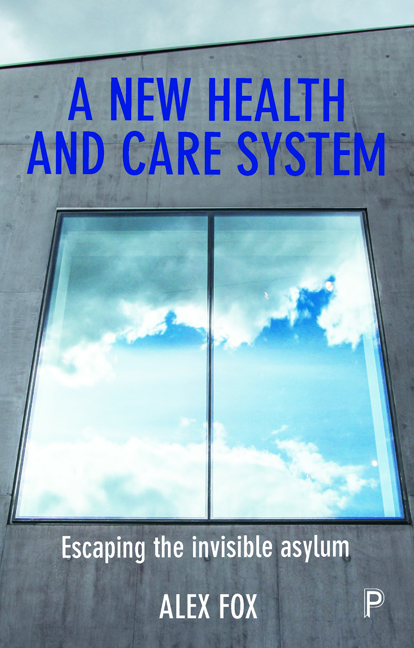Book contents
- Frontmatter
- Dedication
- Contents
- Acknowledgements
- Prologue
- Introduction
- one How we divide the world into community and asylum
- two How we create problems by trying to fix them
- three Why failure pays, but success costs
- four Risk aversion and risk indifference
- five The humanisation experiment
- six Shared Lives
- seven Designing a new national health and wellbeing service
- eight Delivering the national health and wellbeing service
- Can we escape?
- Notes
- References
- Index
eight - Delivering the national health and wellbeing service
Published online by Cambridge University Press: 08 April 2022
- Frontmatter
- Dedication
- Contents
- Acknowledgements
- Prologue
- Introduction
- one How we divide the world into community and asylum
- two How we create problems by trying to fix them
- three Why failure pays, but success costs
- four Risk aversion and risk indifference
- five The humanisation experiment
- six Shared Lives
- seven Designing a new national health and wellbeing service
- eight Delivering the national health and wellbeing service
- Can we escape?
- Notes
- References
- Index
Summary
Too often, we offer people a service, when what they are looking for is a relationship.
(Richard Jones CBE, former adult services director)Valuing what we’ve got
Implicit in the proposal to create a new kind of health and care service is decommissioning at least parts of the current one. It is worth restating that this book should not be read as a charter for cutting state services. Services have already been cut beyond the level at which real suffering is being caused to hundreds of thousands of UK citizens, including the 1.2 million older people who need state support but are denied it (Age UK, 2017). We need all the current investment in public services, and more, if we are to catch back up with the hugely increased demand for support, much less keep pace or overtake it. So we still need most of our current institutions: our hospitals and care homes and prisons, but if the changes in this book reduced demand on them, they might return to something like sustainability. In other words, building a new system is a matter of survival for our traditional services, not a case for their closure.
One of the ways in which we need to change our view of public services is our tendency to think of a building, such as a hospital, as a public service and therefore treat the whole collection of resources in and around that building as one, inviolable public good. A hospital, school, nursing home or community centre is a collection of kinds of resource, which include the buildings, the kit in those buildings, the services based in them, the staff teams and the capacity of the people whom they support. All have value, but their relative values are not all equally recognised within public service hierarchies, which value resources according to the proportion of the overall budget they account for. So the most powerful people in the system manage the largest budgets.
Also contained within and around any building are the relationships between the people who use it and work in it. Those relationships do more to determine the effectiveness of most services and their impact on people's lives, but they are invisible and have no cash value.
- Type
- Chapter
- Information
- A New Health and Care SystemEscaping the Invisible Asylum, pp. 177 - 218Publisher: Bristol University PressPrint publication year: 2018

